Ptinidae family
Who are they?
This coleoptera family is composed of about one hundred species. Most of their larvae are xylophagous.Most of these insects have dull, usually dark colours ranging from chestnut-brown to black, and “pretend to be dead” when touched. They are generally between 2 and 9 mm long. Their size is similar to that of the Bostrychidae (lesser grain borers) and Lyctidae (Lyctus) families, which also comprise numerous xylophagous species.The insect species that used to belong to the Ptinidae family are now part of the Anobiidae family, and two sub-families have been created : the Gibbiinae and the Ptlilininae. The species found in the two sub-families (Anobiinae and Ptininae) are easily distinguishable due to the fact that Anobiinae have a rather elongate appearance whereas Ptininae have a rather round appearance, and Anobiinae antennae have a neatly differentiated antennal club, whereas Ptininae antennae are filiform and clubless.
Characteristic habitus of Anobiidae and Gibbiinae (Ptininae have a similar appearance).
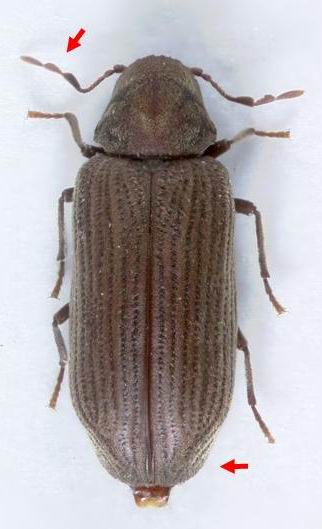

Anobiinae sub-family Ptininae sub-family
Main morphological characteristics and faunistic data.
Family identification is based on the fact that the insects’ head is not visible when observed from above (it is visible in Lyctidae) because it is inserted under the thorax.The features that distinguish the family from Bostrichidae are tibiae without apical spines and hind coxae with furrows for femur insertion. The features that distinguish the family from Bostrichidae are tibiae without apical spines and hind coxae with furrows for femur insertion.
The larvae live in dead wood and are dangerous enemies of worked wood (roof timber, furniture, woodwork, works of art…)
A few species are quite frequently found in houses (Anobium punctatum, Oligomerus ptilinoides, Xestobium rufovillosum) and in museum premises, where they cause serious damage. (Some of them, e.g. Anobium punctatum, have practically become anthropophilic).
Biological facts and damages
The larvae cause damage by digesting wood constituents. Adults do not feed and live only a few weeks’ time. Females lay their eggs in wood cracks and crevices (never on a flat surface), and larvae get into the depths of the material by boring numerous galleries.
The larval cycle usually lasts between 1 and 4 years, depending on climatic conditions and on the extent to which the wood has been altered (cycle length is reduced in case of an attack by lignin-degrading fungi, for example).The insects’ activity can be spotted thanks to the adults’ emergence holes in the wood (they are 1 to 4 mm in diameter and circular) and thanks to the presence of bore-dust (powder-like dust found at the level of flight holes and resulting from wood digestion by larvae).Bore-dust size and shape can sometimes allow species characterisation (for example, deathwatch beetles’ (Xestobium rufovillosum) sawdust pellets have a characteristic, 1-mm diameter, lentil-like shape.
The most dangerous species for worked and crafted woods (roof timber, furniture, works of art, woodwork …) are indicated below :
Anobium punctatum, the common furniture beetle, is a widespread species very often found in furniture; altar pieces, sculptures, picture frames, woodwork, house and historical monument roof timbers … It prefers soft woods whether from deciduous or resiniferous trees, and it is considered as the most dangerous species.
Xestobium rufovillosum, the death- watch beetle, is a widespread species. It is bigger than Anobium punctatum. It prefers hardwood (oak, chestnut, beech) preferably pre-digested by lignin-degrading fungi. That species is essentially found on old wooden pieces, especially when they are exposed to bad weather. As it is bigger than the other Anobiidae species, it is particularly dangerous and can cause considerable damage.
Oligomerus ptilinoides, the furniture beetle, is a species mostly found in the south of France and in the countries around the Mediterranean Sea. It causes important damage in furniture and objects.
Nicobium castaneum, the library beetle, mostly degrades books and softwood (pine, fir, poplar, birch, alder). It is frequently found on furniture and sculptures, especially in churches
Thorax horax and elytron forepart of a few species of Anobiinae pests.

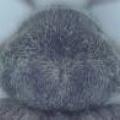


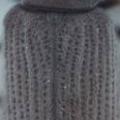
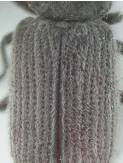
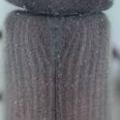
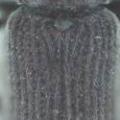
Anobium Punctatium Nicobium castaneum Oligomerus ptilinoides Priobium carpini




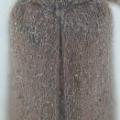
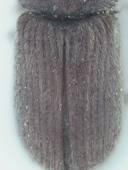
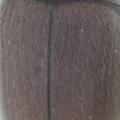
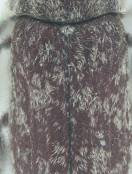
Ernobius nollis Stegobium paniceum Lasioderma serricorne Xestobium ruffovillosum
